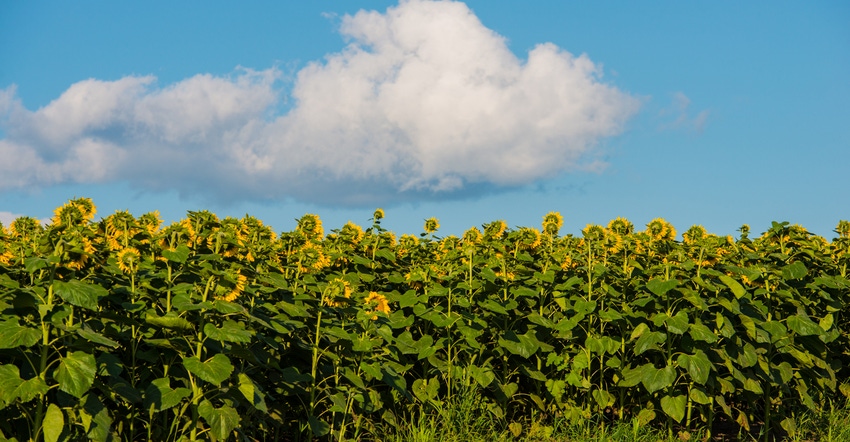
Plant breeders and researchers work to find new and beneficial traits for producers in their work, with the laws of nature often their only limitations.
Brent Hulke, a geneticist in sunflower and plant biology for the USDA Agricultural Research Service, says the end goal of their research is to benefit the producer. “Right now, we’re doing basic genetic studies to find the genetic causes of a lot of interesting traits,” he says.
Some of their research projects include:
genetic enhancements of sunflower yield
tolerance to biotic stress
early-maturing sunflowers for double-crop use
how soil microbiome impacts resistance to sclerotinia stalk rot
genetic marker development for hull hardness and oil content
“I’m most proud of the work we’re doing right now in plant breeding, and actually working from the producer angle and putting it into practice with plant varieties,” he says.
Hulke says that much of their research creates parent lines for industry to create hybrids. “Every year, we try to release a few inbred lines that are basically the parents of hybrids grown in the fields. We put these lines together so that industry can run with it and make hybrids from it in their breeding programs.”
Hulke likes to say their projects don’t have a begin or end date, but rather are in a pipeline to continuously improve.
“We go through the process of deriving inbred lines from our breeding populations that is roughly a five- to seven-year window. And then beyond that, it gets incorporated into parental lines to get a hybrid — then to the hybrids the farmer actually grows, which usually needs some testing and evaluation,” he says. “When it’s all said and done it can be anywhere from 10 to 15 years to get a product from start to finish. It takes significant time to get some of these ideas out to fruition.”
Real-world applications
One of the team’s recent beneficial research projects has created shorter- and earlier-maturing sunflower varieties, which can help combat blackbird damage. Started in 2018, this project’s goal is to extend early-maturity oilseed programs to include both western Canada and regions of the United States where double-crop production of sunflower is a possibility.
“One benefit of the early-maturing and shorter varieties can be to plant early and get it off before the blackbirds come through, and shorter-maturing varieties help combat them as well, as they like having taller sunflowers,” he says.
Another benefit of this plant type is the ability to utilize it in a double-cropping system. “It’s really useful in the central and southern Plains for following winter wheat, so you can actually get a full crop of sunflower in Kansas and Colorado,” Hulke says. “After harvesting the winter wheat, we just plant right into that stubble. And if you have the right, early-maturing hybrid, you can get a crop off of that.”
Another project underway discusses sunflower varieties and their tolerance to environmental stresses. Hulke says in reaction to reports from the Intergovernmental Panel on Climate Change, they’re working to create varieties that can be successful in multiple conditions.
“Their assessment of our growing environment here is that the biggest change we’re going to see in our climate is the variation of weather,” Hulke explains.
A wider variation of weather conditions means that the varieties Hulke and his team are working to create must be able to be grown in drought, flood and other extreme weather conditions.
“As a plant breeder, I’m very keyed into this situation. We need to be looking at developing crops that can ideally handle both a high wet situation and have disease resistance to counteract the wet weather diseases, and at the same time, handle drought and lack of water,” he says.
“We need to be looking for greater resiliency in our crops, and that’s something we take pretty seriously,” he says. “Our main goal from the producer angle is just making sure that if a plant can possibly produce a trait that’s of importance to producers, even if it’s something new, we’re going to try to get it within what nature can provide us.”
About the Author(s)
You May Also Like






